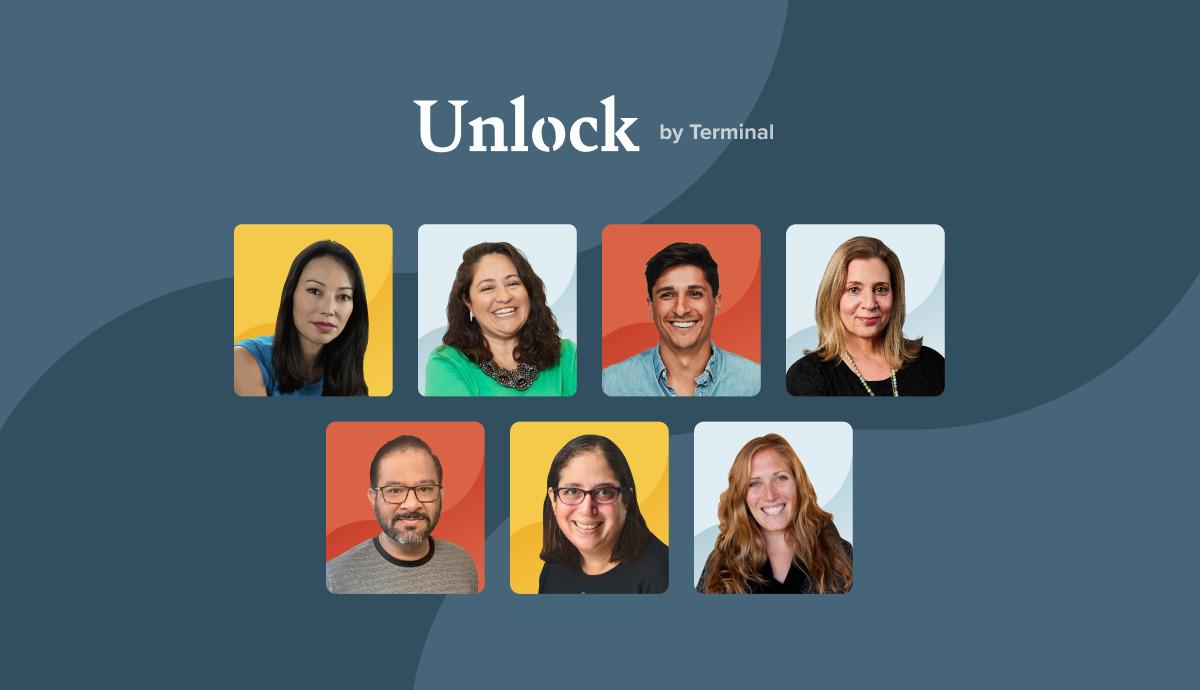
Hiring + recruiting | Blog Post
Global Hiring Done Right: Insights from our webinar with Handshake
Linzi Nield
Share this post
Handshake’s mission is to democratize access to opportunity. The $3.5B software company works to ensure that any student can build a great career no matter who they know, where they live, or what school they attend. So it’s not surprising that Handshake would seek out global talent to create a team of highly skilled remote engineers. After all, when your company is founded on the knowledge that talent is everywhere, there’s nothing stopping you from tapping into the potential of global markets.
Terminal CMO Tejal Parekh recently sat down with Handshake’s Senior Director of Engineering, Robin Lim, in our webinar, Global Engineering: Why tech leaders are hiring global talent, and how to do it right. Lim shared insights into finding the right recruiting partner, time zone alignment, and how Handshake’s remote strategy has evolved over the last few years.
Tejal: According to Terminal’s 2022 State of Remote Engineering Report, 74% of engineers want to work remotely the majority of the time. It is critical for employers to support a remote or a hybrid workplace to attract and retain talent. I would love to hear your point of view on remote work. How has Handshake’s organizational structure evolved over the past few years?
Robin: At Handshake, we have a motto – talent is everywhere but opportunity is not, which ties in with our core mission of democratizing opportunity for recent college graduates. The same logic can be applied to hiring. Talent is everywhere. It’s not all in San Francisco. It’s not all in the major cities in the United States. Even pre-Covid, Handshake was remote-friendly. But the landscape has changed a ton because of Covid.
We initially built our teams around locations. We had three primary teams at Handshake: one team was based in San Francisco, one was based in Denver, – which is where I’m located – and then we had a purely remote team. Our CTO came in and pointed out that those distinctions limit internal mobility because it draws lines around teams. It was a really great point. In order to keep our teams engaged, keep the work fresh and interesting, and ultimately retain talent at the company, engineers need to be able to shift around and move to different teams to try working on different areas of our product.
One of the big shifts that we made post-Covid was to get rid of those lines and say, “Cool, all our teams are generally remote-friendly now.” We lean towards a hybrid environment where some of us are located near offices. We can come in and engage in person if we enjoy that, but in general everything we practice in terms of meetings and communication is very remote-friendly.
Tejal: I want to bring up a quote from Andrew Dudum, Founder + CEO of Hims: “There’s no way the best people in the world for all the different roles you need live within 10 miles of you.” I think that this is exactly what some of the leaders who’ve been ahead of the curve have understood, especially as global markets become ever more compelling. What’s your guiding philosophy when it comes to finding talent in new markets?
Robin: We started this journey by figuring out what it would be like to hire outside of the U.S. My CEO set me up to talk to a bunch of CTOs, VPs of Engineering, and Directors who have led teams outside the US to really understand how to go about it. One of the salient points that came out of those conversations was around time zone alignment. Working within our adjacent time zones isn’t challenging, but working with engineers in places like China and India would require us to organize ourselves differently to ensure that we’re not taking meetings at two or three in the morning. So that played a big role in our strategy: We knew if we wanted to hire talent outside the United States, then we should work within our adjacent time zones. There was a ton of talent in Latin America and Canada that we hadn’t tapped. That’s why we started working with Terminal.
“At Handshake, we have a motto – talent is everywhere but opportunity is not, which ties in with our core mission of democratizing opportunity for recent college graduates. The same logic can be applied to hiring.”
Handshake’s Senior Director of Engineering, Robin Lim
Tejal: No remote hiring plan is complete unless you’re thinking about customizing your recruiting for the different markets. For example, Latin American engineers prefer shorter interviews and they’re not used to pair programming interviews. A hiring partner has the expertise to help companies understand the intricacies of different markets. What do you look for when choosing the right partner for hiring beyond your typical geographies?
Robin: We partnered with Terminal because they were very embedded in the countries we were interested in. They were so knowledgeable of the Canadian, Mexican, and Colombian markets, which also gave us the time zone alignment that was so important to us. One thing that really impressed me was that Terminal had data scientists that gave us easy-to-understand statistics around things like cost and how senior a given talent market was.
They’ve also helped us marry our own recruiting efforts to Terminal’s best practices. For example, Terminal noticed that one of our questions in our tech screen was actually a little bit culturally biased. We needed to ensure that we weren’t asking U.S.-centric questions. Terminal helped us to change our interview questions overall – including in the U.S. market – in case we were interviewing U.S.-based candidates that weren’t familiar with U.S. culture. The partnership with Terminal has just been absolutely amazing and we’re very, very appreciative.
Ready to see how Terminal can work for your company? Connect with our team today to start the conversation.
Register for our next webinar in the Mastering Remote series, “Leading remote teams: How to scale up and avoid culture crash.”


